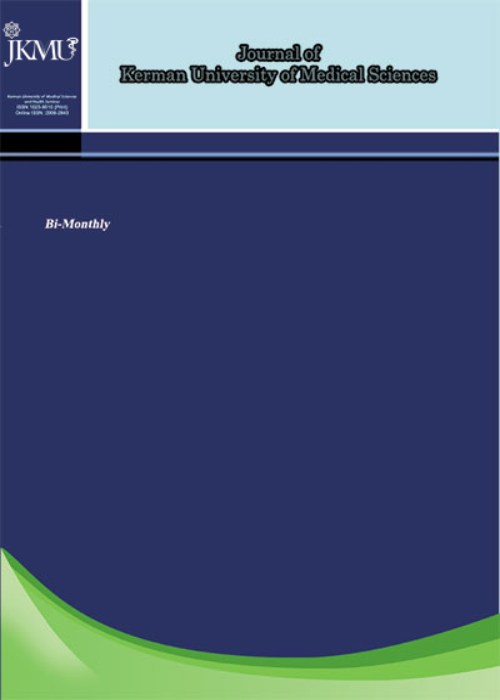Risk Factors of Growth Faltering among 3-36 Months Old Children in Ahwaz, Iran
Author(s):
Abstract:
Background and Aims
Malnutrition is defined as nutritional disorders or unfavourable health status that can be the result of overconsumption or underconsumption of one or more nutrients. The causes of malnutrition are complex، multidimensional، and population specific. United Nations Children’s Fund (UNICEF) has adapted a conceptual framework for facilitating researchers in determining the causes of malnutrition in each area. The aim of this study was to determine some risk factors of growth faltering among 3-36 month old children in Ahwaz، Iran. Methods
This case-control study was conducted on 180 children 3-36 months old in Ahwaz. The subjects were children whose growth curves were horizontal or downward for at least two recent consecutive months. The controls were children with upward growth curves. Data collection was done by face to face interview، family file at the health centers، and direct measurements (mainly for anthropometric measurements). Data analyses were performed by SPSS software. Moreover، chi-square، Mann-Whitney، Kolmogorov-Smirnov، Student’s t-test، and logistic regression were statistical tests which were used according to the type and distribution of the variables. Results
From household variables، the number of family members (P=0. 013)، number of siblings (P=0. 012)، and mother’s educational level (P=0. 019) showed significant association with growth faltering. Among child variables، the child’s age (P<0. 001)، child’s birth order (P=0. 031)، and birth interval with the next child (P=0. 004) had significant relationships with growth faltering. Of the child health care variables، the mother’s child care status (P=0. 017)، and the mother’s nutritional knowledge (P=0. 006) had significant relationships with growth faltering. Finally، the pattern of child nutrition (P<0. 001)، and the age of starting weaning (P < 0. 001) showed significant differences between the two groups. Conclusion
This study revealed that the child nutritional pattern، number of family members، number of siblings، child’s age، child’s birth order، birth interval with the next child، mother’s educational level، mother’s child care status، mother’s nutritional knowledge، and the age of starting weaning were related to child malnutrition in Ahwaz. Therefore، appropriate intervention strategies، according to these findings، should be considered by health and other relevant sectors in order to control the problem of childhood malnutrition.Keywords:
Language:
Persian
Published:
Journal of Kerman University of Medical Sciences, Volume:20 Issue: 5, 2013
Page:
481
magiran.com/p1184732
دانلود و مطالعه متن این مقاله با یکی از روشهای زیر امکان پذیر است:
اشتراک شخصی
با عضویت و پرداخت آنلاین حق اشتراک یکساله به مبلغ 1,390,000ريال میتوانید 70 عنوان مطلب دانلود کنید!
اشتراک سازمانی
به کتابخانه دانشگاه یا محل کار خود پیشنهاد کنید تا اشتراک سازمانی این پایگاه را برای دسترسی نامحدود همه کاربران به متن مطالب تهیه نمایند!
توجه!
- حق عضویت دریافتی صرف حمایت از نشریات عضو و نگهداری، تکمیل و توسعه مگیران میشود.
- پرداخت حق اشتراک و دانلود مقالات اجازه بازنشر آن در سایر رسانههای چاپی و دیجیتال را به کاربر نمیدهد.
In order to view content subscription is required
Personal subscription
Subscribe magiran.com for 70 € euros via PayPal and download 70 articles during a year.
Organization subscription
Please contact us to subscribe your university or library for unlimited access!


